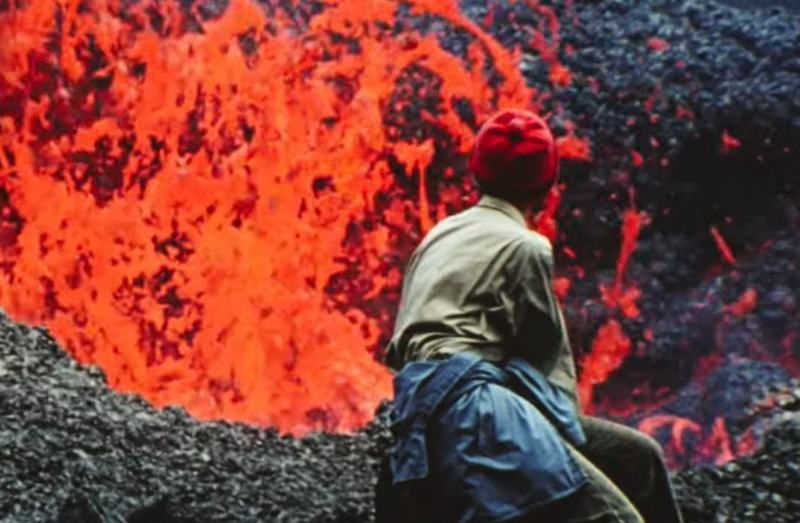Director – Sara Dosa – 2022 – US – Cert. PG – 93m
The volcano footage *****
(and there’s lots of it, plus footage of the volcanologists themselves)
The brief animated inserts ***1/2
Almost everything else **
The 25-year career of the late volcanologist couple Katia and Maurice Krafft is explored through their extensive film archive of volcanic activity – out in cinemas on Friday, July 29th
There have been volcano movies before, but nothing quite like this. Most of them fall into the disaster movie category, with the better ones (The Last Days Of Pompeii, Ernest B. Schoedsack, 1935; Dante’s Peak, Roger Donaldson, 1997) delivering incredible visual effects. The force of nature that is the volcano is obviously extremely dangerous to film so you can understand why film producers would want to recreate images of the phenomenon for the big screen rather than attempt to go out and film them.
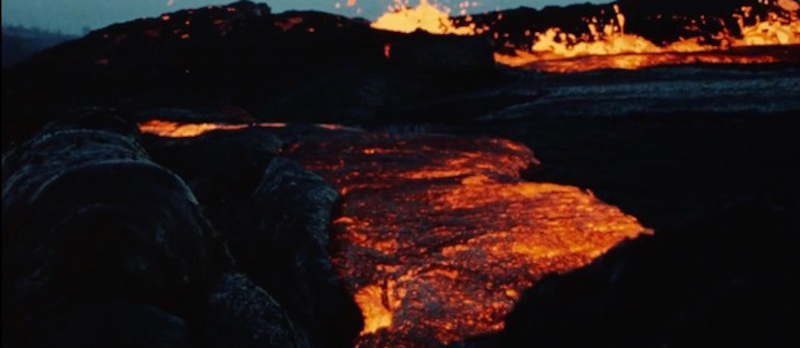
This current film, however, is not a fictional feature in that mould but something entirely different: a documentary. It perfectly fits the remit of its distributor National Geographic of “exploring, illuminating, and protecting the wonder of our world”. It’s ostensibly a film about two real life volcanologists Katia and Maurice Krafft who first met in 1966 and died in an volcanic blast in 1991. The exact details about how they met are not clear: the film presents three different versions of how they met, any one of which might be wholly or partially true, but as the voice-over points out, their story is lost to time. Some of this is quite whimsical, as are some of the little animated inserts used to break up the live action.
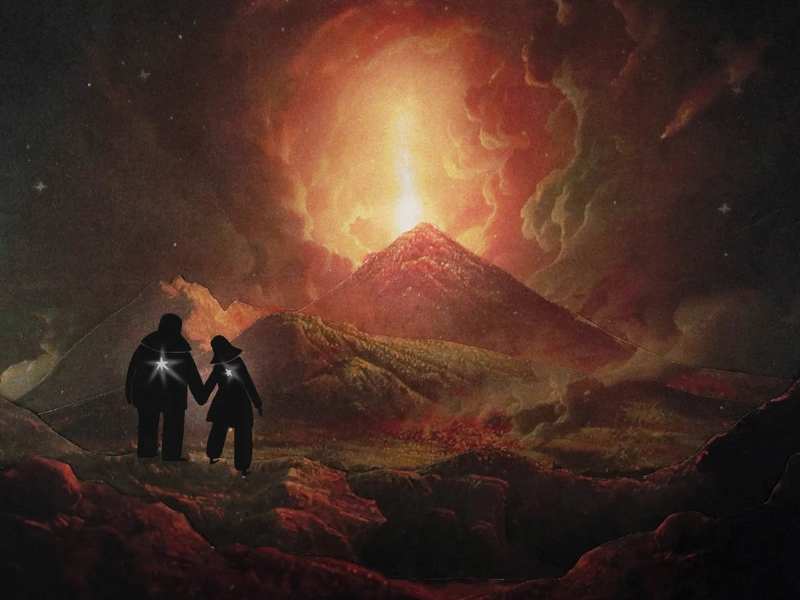
The exact details about how they died are clearer in the sense that, we have the time and place of their death, but not in the sense that, they were filming an active volcano and never came back.

The final shot of the Kraffts (two small figures filming volcanic activity in the distance) gains its power not so much from the shot itself, which in many ways is unremarkable, but from the knowledge that the camera is capturing these people alive for the very last time. I was going to add that their bodies will never be found, but historically corpses have been preserved by volcanic ash, as for example in Pompeii. Yet the film doesn’t go into such detail, in fact it’s pretty poor on such things, as if the filmmakers have been seduced by the incredible images the Kraffts took of volcano activity and put them up on the screen without knowing exactly how to contextualise or describe them. They just leave the audience to founder.
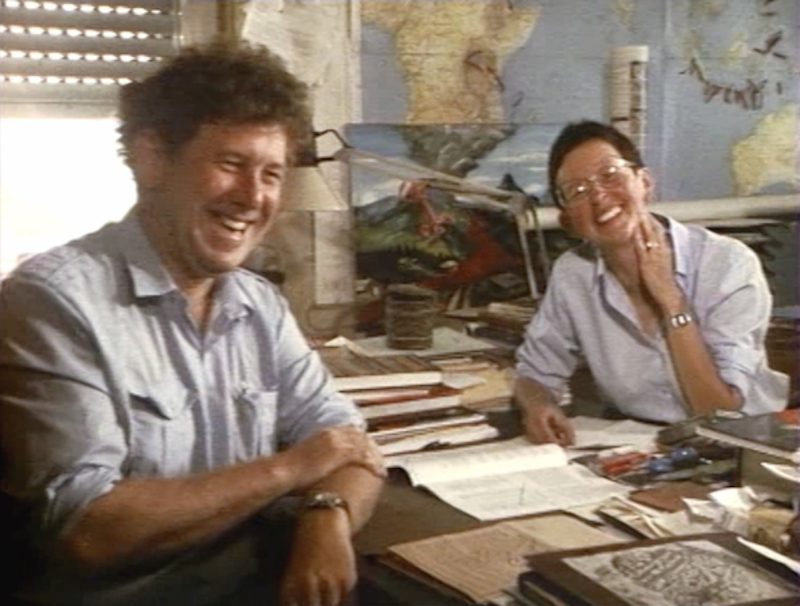
There’s pitifully little in terms of scientific analysis beyond one major definition of categories worthy of Jurassic Park (Steven Spielberg, 1993). Where that film divided its dinosaurs into “meatosaurs and veggiesaurs”, this one divides its volcanoes into Red Volcanos and Grey Volcanos. The red ones are what people think of when they think of volcanoes: lava flowing in channels, which the Kraffts – whose words are added in voice-over throughout by actress Miranda July – consider safe because the direction the channels will take is predictable. The grey ones spew clouds of ash into the sky without warning to rapidly and fatally rain down on any living thing in the immediate vicinity: these are the killers, the ones who “give volcanologists a bad name”.
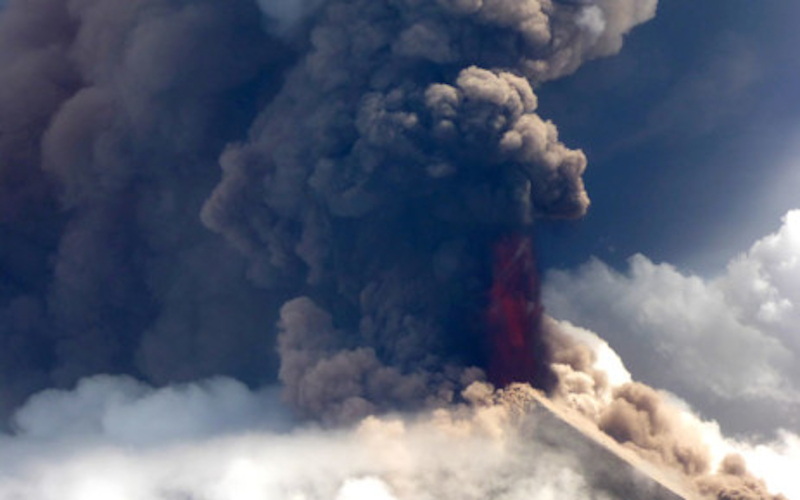
Beyond that helpful distinction, the film offers little to help make sense of its images as the couple film one event of volcanic activity after another. The images from the Kraffts’ film library are truly incredible, giving a real sense of the power, majesty and uncontrollable nature of the natural world, but without any help being forthcoming from the film makers you may feel that you need a degree in volcanology to make any sense of them. Occasional insights are found in Katia’s re-voiced comments, such as when she talks about being happy that Maurice usually goes ahead of her because that means that if the ground can support him, it can support her because she only weighs about half the amount he does. We don’t hear as much of Maurice’s words, however he talks about his fear of her being injured in the field and his not being able to do anything about it.

Since one half of the couple – usually Maurice – was operating the camera, the two of them rarely appear together in the footage they shot, although there are occasional exceptions – Maurice in a heatproof suit throwing an object at Katia in a heatproof suit, for example. Again, though, if you come to this film to find out who these two people were and exactly what made them tick, you’re going to be disappointed because the film doesn’t even try.
As the life they live puts them constantly on the edge of danger, the death of one, other or both of them at any time is a potential constant. You get the impression that they love doing what they do, expect to die one day doing it and hope they go together when they go. Which is what happened in 1991.
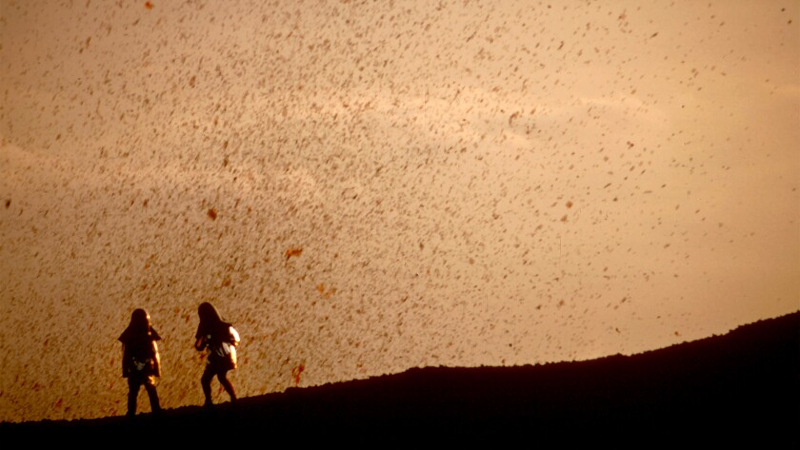
For all the film’s shortcomings, however, what can’t be denied is the incredible wealth of volcano footage from the Krafft’s archive, to which the filmmakers obtained access and which has been digitalised especially for the film. That’s quite an asset and makes the film worth seeing. It’s such a pity so many other aspects let the film down so badly.
Fire Of Love is out in cinemas in the UK on Friday, July 29th.
Trailer:
